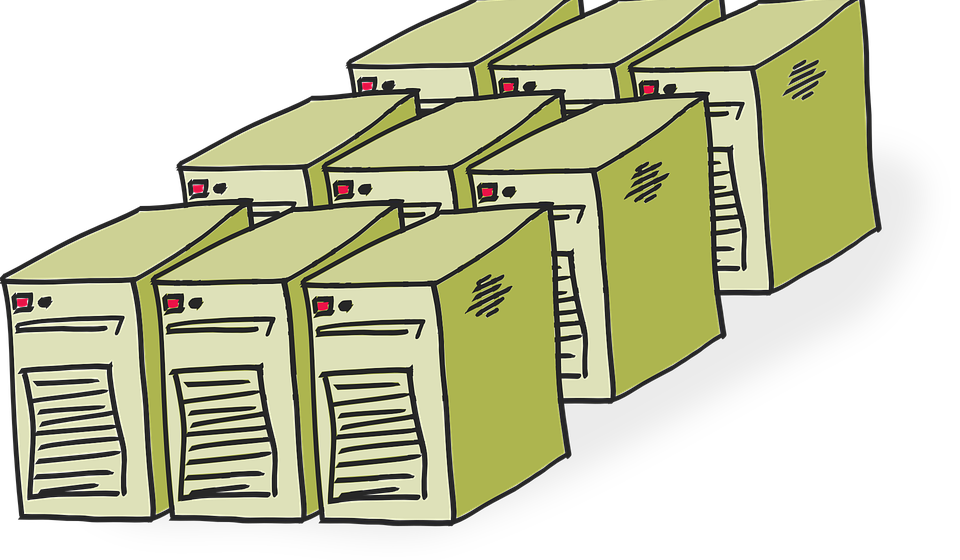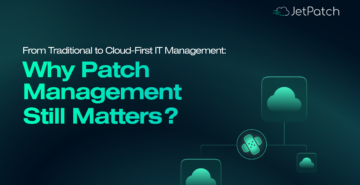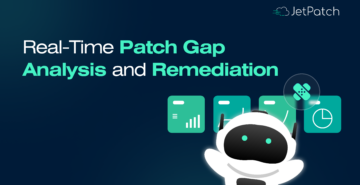Enterprise IT leaders often compare Ansible vs Puppet when deciding on a scalable automation solution. Both tools play a major role in configuration management, provisioning, and compliance enforcement across hybrid environments. Choosing the right approach impacts operational efficiency, security posture, and long-term agility.
The Ansible vs Puppet decision matters for any organization managing 200+ systems. While Ansible is valued for agentless, push-based orchestration, Puppet uses an agent-based, pull-driven model ideal for maintaining defined states. Both are powerful configuration management systems, but their differences influence adoption paths.
Explore how Ansible vs Puppet compare, where they excel, and how JetPatch strengthens patching and compliance in both setups.
Ansible at a Glance
Ansible is an open-source configuration management system maintained by Red Hat.
Ansible uses a control-based execution model that connects to systems using SSH or Win RM. It avoids agent installation by pushing modules to target machines, executing tasks, and removing the modules after completion. This makes Ansible suitable for managing hybrid and cloud-native environments with minimal overhead.
Ansible playbooks, written in YAML, describe tasks in a way that is easy to manage, version, and reuse. These playbooks automate system setup, application deployment, and compliance enforcement.
Key advantages of Ansible:
- Agentless architecture
- Human-readable YAML configuration
- Seamless CI/CD and cloud integration
- Rapid deployment in hybrid environments
Common Ansible use cases:
- Fast provisioning of cloud infrastructure
- Ad hoc orchestration across distributed systems
- Policy enforcement through declarative playbooks
Despite these strengths, Ansible does not offer native patching workflows. Custom playbooks must be created to handle updates, scheduling, rollback, and testing. This can lead to inconsistent outcomes, especially in enterprises using configuration management databases or requiring audit-ready patch compliance.
Puppet at a Glance
Puppet is a configuration management system that enables enterprises to automate the provisioning, configuration, and continuous enforcement of infrastructure state across physical, virtual, and cloud environments. It is widely adopted by organizations that prioritize compliance, scalability, and consistent infrastructure behaviour.
Unlike agentless tools, Puppet operates on a client-server model. A Puppet primary server compiles configuration manifests into brochures and distributes them to Puppet agents running on managed nodes. These agents periodically check in, apply necessary changes, and report their status back to the server.
Puppet uses a declarative language to define system configurations, which helps enforce infrastructure as code (IaC) practices. This approach ensures systems remain in a desired state, even if they drift due to manual changes or external events.
Highlights:
- Agent-based architecture ensures continuous enforcement
- Purpose-built for large, policy-driven infrastructures
- Strong versioning, auditing, and role-based access controls
- Compatible with hybrid and multi-cloud environments
Ideal use cases for Puppet include:
- Managing thousands of nodes across global data centers
- Maintaining strict configuration compliance across teams
- Enforcing security baselines and operational standards
In the context of patch management, however, Puppet requires users to define patching logic manually within their manifests or modules.
While powerful, this adds scripting overhead and can create gaps in testing, rollback, or patch-level compliance tracking areas where purpose-built solutions are often needed.
Capabilities Comparison
| Feature | Ansible | Puppet |
| Execution Model | Push-based; tasks run from a control node over SSH/Win RM | Pull-based; agents fetch configurations from a Puppet primary server |
| Architecture | Agentless | Agent-based |
| Configuration Style | YAML playbooks (procedural style) | Puppet DSL (declarative model) |
| Ease of Adoption | Simple to set up; minimal prerequisites | Steeper learning curve; requires agent deployment |
| Change Enforcement | One-time execution unless scheduled manually | Continuous enforcement via agent check-ins |
| Scalability | Effective at scale, but execution is serial unless optimized | Designed for large, complex infrastructure environments |
| Cloud & DevOps Fit | Strong integration with CI/CD pipelines and cloud platforms | Better suited to controlled, policy-driven environments |
| Compliance & Auditing | Requires custom logging or external tools | Built-in reporting and role-based access controls |
| Use in Regulated Industries | Popular for hybrid or cloud-first environments with flexible needs | Favoured where strict compliance and infrastructure standardization matter |
| Patching Support | Requires manual playbook creation; no native rollback or compliance tracking | Patching done via custom modules; lacks native testing/rollback handling |
Patching: The Operational Gap in Both
While both Ansible and Puppet are mature configuration management tools, neither provides a built-in patch management solution designed for enterprise-scale environments.
What’s Missing in Ansible
With Ansible, patching is entirely manual. Users must write and maintain playbooks to handle every part of the process, from patch discovery and installation to verification and logging.
There is no native support for rollback, patch window enforcement, or compliance visibility. At scale, this creates fragmentation and increases the risk of inconsistent patch outcomes across environments.
What’s Missing in Puppet
Puppet offers modules that can automate software updates, but it doesn’t include a dedicated patch management engine. Rollback workflows and pre-testing have to be custom-scripted.
Visibility into patch status, coverage, and failures is limited unless external integrations or reporting systems are used.
Why This Matters
In enterprise environments, patching is more than just task execution. It requires:
- Sequencing across systems and OS types
- Policy enforcement by severity or patch type
- Rollback in case of failure
- Compliance dashboards and audit logs
- Coordination with vulnerability scanning tools
Both configuration management systems lack the native capabilities to meet these needs consistently, especially across hybrid infrastructure and regulated industries.
Where JetPatch Comes In
Ansible and Puppet are widely used for provisioning and configuration, but patching is often a separate challenge. Neither tool offers built-in support for scheduling, testing, rollback, or compliance reporting, all critical in enterprise environments.
JetPatch addresses these gaps without replacing your existing setup. Learn how JetPatch accelerates remediation and compliance in this patch management overview while working alongside both platforms to automate patch workflows across operating systems, enforce policy-based execution, and improve visibility.
For teams using Ansible, JetPatch removes the need to maintain custom patch playbooks. For those on Puppet, it reduces scripting overhead and adds monitoring, rollback, and compliance tracking.
It connects with tools like vulnerability scanners and ITSM systems to unify patch actions across the environment. Whether your infrastructure is agentless, agent-based, or mixed, JetPatch helps standardize patch execution and simplifies audit readiness.
This allows IT teams to keep their preferred configuration tools while gaining operational control where it’s most often lacking in patch management.
Conclusion
Choosing between Ansible and Puppet depends on your infrastructure goals.
But for patching, both fall short. JetPatch complements either platform by automating patch workflows with patch management, all without disrupting your existing setup.



